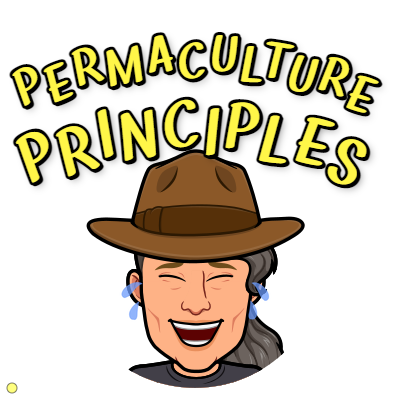Permaculture Principles: Designing for a Sustainable Future
Permaculture is a design system that aims to create sustainable, resilient, and regenerative systems that work in harmony with nature. At the heart of permaculture are a set of principles that guide the design process and help create systems that are both efficient and effective. While there are many permaculture principles, we will focus on the foundational ones that form the basis of permaculture design.
Observe and Interact
The first principle of permaculture is to observe and interact with nature. This means taking the time to carefully observe the natural systems around us, and to learn from them. By paying close attention to the environment and the natural processes that occur within it, we can design systems that work with nature, rather than against it.
Catch and Store Energy
The second permaculture principle is to catch and store energy. This includes capturing energy from the sun, wind, water, and other natural sources and finding ways to store it for later use. This might involve installing solar panels, creating a rainwater harvesting system, or building a passive solar greenhouse. By capturing and storing energy, we can reduce our dependence on non-renewable sources of energy and create more resilient systems.
Obtain a Yield
The third permaculture principle is to obtain a yield. This means designing systems that provide tangible benefits, such as food, fiber, fuel, or other resources. By designing systems that produce a yield, we can create systems that are both sustainable and productive. This might involve designing a garden that produces food, or a forest garden that provides timber and other resources.
Apply Self-Regulation and Accept Feedback
The fourth permaculture principle is to apply self-regulation and accept feedback. This means designing systems that are self-regulating so that they can adapt to changing conditions and maintain balance over time. It also means accepting feedback from the environment and other stakeholders and using this feedback to improve the design of our systems.
Use and Value Renewable Resources and Services
The fifth permaculture principle is to use and value renewable resources and services. This means designing systems that rely on renewable resources, such as wind, solar, and biomass, and valuing the services provided by natural systems, such as pollination, nutrient cycling, and pest control. By using and valuing renewable resources and services, we can create more sustainable systems that are less dependent on non-renewable resources.
Produce No Waste
The sixth permaculture principle is to produce no waste. This means designing systems that minimize waste and make use of all resources. It might involve composting, recycling, or designing systems that use waste products as inputs. By producing no waste, we can create systems that are more efficient and sustainable.
Design from Patterns to Details
The seventh permaculture principle is to design from patterns to details. This means starting with the larger patterns and structures in a system and then designing the details to fit within those patterns. By designing from patterns to details, we can create more integrated and efficient systems that work in harmony with the environment.
Integrate Rather than Segregate
The eighth permaculture principle is to integrate rather than segregate. This means designing systems that are interconnected and work together to create a more resilient and sustainable whole. It might involve designing a food forest that incorporates a range of different plant species, or a homestead that integrates a range of different systems, such as energy, water, and food production.
Use Small and Slow Solutions
The ninth permaculture principle is to use small and slow solutions. This means designing systems that are small-scale, low-tech, and adaptable. By using small and slow solutions, we can create systems that are more resilient and sustainable, and that can adapt to changing conditions over time. This might involve designing a small garden that produces food for a family, or a small-scale aquaponics system that provides fish and vegetables for a community.
Use and Value Diversity
The tenth permaculture principle is to use and value diversity. This means designing systems that incorporate a diverse range of species, ecosystems, and cultural perspectives. By using and valuing diversity, we can create systems that are more resilient and adaptable, and that can provide a range of benefits to different stakeholders. This might involve designing a food forest that includes a range of different plant species, or a community garden that brings together people from different cultural backgrounds.
Use Edges and Value the Marginal
The eleventh permaculture principle is to use edges and value the marginal. This means designing systems that incorporate the edges between different ecosystems or environments, and that value the marginal areas that might otherwise be overlooked or neglected. By using edges and valuing the marginal, we can create systems that are more diverse and productive, and that can provide a range of benefits to different stakeholders. This might involve designing a garden that incorporates the edges between different habitats, or a farm that makes use of the marginal areas for grazing or wildlife habitat.
Creatively Use and Respond to Change
The twelfth and final permaculture principle is to creatively use and respond to change. This means designing systems that are flexible and adaptable, and that can respond to changing conditions and feedback from the environment and other stakeholders. By creatively using and responding to change, we can create systems that are more resilient and sustainable, and that can continue to provide benefits over time. This might involve designing a garden that can adapt to changing weather patterns, or a community that can respond to changing social or economic conditions.
Conclusion
By incorporating these 12 permaculture principles into our design processes, we can create systems that are more sustainable, resilient, and regenerative. Whether we are designing a garden, a farm, a community, or a city, permaculture offers a framework that can help us create a more sustainable future for ourselves and for future generations.

